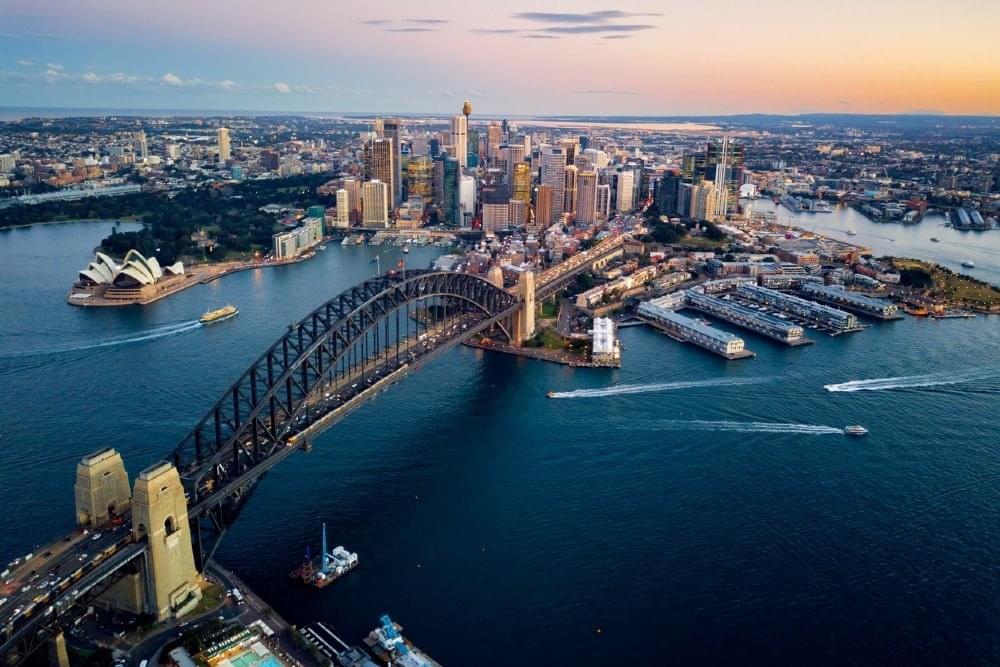Sydney and NSW property market update - March 2020
It’s safe to say that March has been quite a difficult month for property markets in NSW, with a tonne of disruptions to the way vendors, buyers and agents navigate the market. With that being said, properties continued to transact, with the real estate industry quickly adapting day-by-day.
Over the month, the CoreLogic Home Value Index showed that property values increased by 1.1% in Sydney. However, property price growth took a hit halfway through the month as social distancing measures were rolled out and progressively became more restrictive.
There was however some good news for buyers, with the RBA cash rate being slashed for the second time in a month to a record low of 0.25%.
Here’s what’s been happening in the Sydney property market

Houses
$1,020,849
Monthly change: +1.1%
Units
$770,469
Monthly change: +1.1%
Over the March quarter, Sydney had the highest growth across all capital cities, with values up 3.9%. Although housing values continued to rise, the second half of March experienced a slowdown in growth as social distancing measures rolled out, and sentiment slumped.
These restrictions have prompted some economists to forecast that property sales could fall by up to 50%, though real estate agents are conducting more private inspections and online auctions.
According to CoreLogic, there were price rises across every city region except the Sutherland Shire. Ryde led the charge, rec ording an increase of +2.4%, followed by the North Shore and Blacktown.
According to CoreLogic, over the past year Sydney house prices have grown by 14.5%, and when it comes to sub-regions within Sydney, seven made the top ten for annual positive changes in growth across the country.
These regions include:
| Region | Annual change in dwelling values |
| Ryde | +19.8% |
| Inner West | +18.1% |
| Baulkham Hills and Hawkesbury | +17.3% |
| Northern Beaches | +14.6% |
| City and Inner South | +14.4% |
| North Sydney and Hornsby | +14.2% |
| Inner South West | +13.2% |
While these annual figures look somewhat positive, it’s important to take figures from March with a grain of salt. With the market changing so quickly, with bans on open inspections and on-site auctions, the overall figures for the month are not truly capturing consumer and industry sentiment. These bans, in conjunction with decreased market sentiment could discourage sellers and buyers from entering the market.
When it comes to auction clearance rates, these figures should be taken with a grain of salt too. Figures in Sydney are currently hovering around 57%, however, with Covid-19’s hold on the market, this number is quite meaningless, given the public ban on auctions which is pushing agents to sell properties via private treaty instead.
Here’s what’s happening in the regional NSW market
Houses
$478,770
Monthly change: +0.5%
Units
$400,188
Monthly change: +0.3%
Across the forty-two non-capital city sub-regions in the country, only five areas recorded a fall in dwelling values over the March quarter. The regions that performed the best were what CoreLogic refers to as lifestyle markets, or regional satellite cities adjacent to major capital cities.
Two regions in New South Wales made the cut in the top ten sub-regions for a positive change in annual dwelling values. Those were Newcastle and Lake Macquarie, posting +5.1% annual growth, and the Illawarra region, growing annually by +5.7%.
When looking at the overall national higher value segments in the market, the quarterly growth rate fell from 6.6% over the December quarter to 3.6% over the March 2020 quarter.
According to Mr Lawless, these higher end value segments have traditionally led lower value segments, especially in Sydney and Melbourne. Since we’ve seen such a deceleration of growth in this housing value segment, we can expect that growth will slow more broadly in the coming months.
“A large proportion of job losses have been in lower-paid sectors, such as hospitality, travel or tourism. However, equity values have also been hard hit, which could contribute to weaker demand across the higher value segments of the market," Mr Lawless said.
Sydney and NSW rental market update
Sydney rental yields are at the lowest level they’ve been in years, tracking at 2.96% in March.
The rental market is being impacted by Covid-19 too, with landlords being urged to cut rents to lease out vacant properties amid growing concerns about further lockdowns and growing unemployment rates. The rise in vacancies has also been exacerbated by share-houses disbanding as the unemployed move home due to struggling to pay rent, and working holiday visa tenants heading back to their home countries.
This downward pressure is set to continue with today’s NSW government announcement banning anyone in NSW from leaving their own home to stay in an Airbnb or other short-term rental.
According to figures released by property listing portal Domain, rental listings were up 14 per cent year on year in NSW.
This will mean more Airbnb properties will now enter the rental market, as Airbnb hosts expect a sluggish tourism market for the foreseeable future, and will look to have their properties occupied by long-term tenants.
According to figures released by property listing portal Domain, rental listings were up 14 per cent year on year in NSW, and according to Trent Witlshire, Domain’s Chief Economist, the areas where more new rentals are hitting the market, seem to coincide with the areas where short-term stays were the most concentrated, which include the Sydney CBD, Bondi, Coogee and the Northern Beaches.
Areas in regional NSW are not immune either, with rental markets in the Northern Rivers, Byron Bay and Port Stephens being hit with a glut of rentals. This is expected to drive rental yields down further as vacancies increase amid the pandemic.
How will Covid-19 affect Sydney’s property market and what should we expect for the months ahead?
If you’re wondering what the outlook is for the Sydney property market, you’re not alone. It’s up there with one of the most Googled terms since the pandemic hit our shores. Prior to this, the property market in Sydney was developing some good momentum, and a few things were driving that.
Interest rate cuts, easing of credit conditions which flooded the market with buyers, and a low supply of property listings, which had created more competition between eager buyers.
With the situation changing day by day, it’s hard to predict what will happen to the market long-term.
“Although Australia’s housing markets have begun to enter a period of disruption, they are coming from strong foundations.”
Read: A guide to selling a home during the Covid-19 crisis
Paul Bloxham, HSBC’s Chief Economist for Australia and New Zealand said that predicting house prices wasn’t possible since Coronavirus is unleashing so much turmoil on the economy.
Tim Lawless, Head of Research at CoreLogic echoed this sentiment, stating that, “The housing market won’t be immune to a drop in sentiment and weaker economy, however the extent of the impact on dwelling values remains highly uncertain.”
If prices do fall, how much could we expect them to fall? While property transactions will slow, Mr Lawless expects that housing values will be more insulated throughout this crisis.
“Although Australia’s housing markets have begun to enter a period of disruption, they are coming from strong foundations,” Mr Lawless said.
"Arguably, the longer it takes to contain the virus and bring economic operations back to normal, the higher the downside risk to housing values," he said.
The bottom line is: prices will go down. As changes in employment opportunity and income growth take a tumble, so too will property values. The extent to which these are affected is going to depend on the length of the outbreak and the fiscal measures put in place by the government to protect businesses and keep Australians in jobs.
When it comes to the government stimulus packages aimed to bolster the economy, SQM Research Director Louis Christopher said, "All this stimulus will make a big difference once we're through the eye of the storm."








